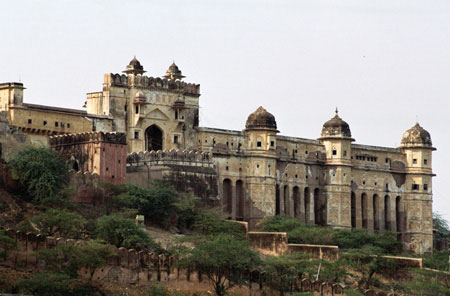
The Singh Pol, or Lion Gate. For the incorrigible tourist, it's possible to get an elephant ride up to the gate.
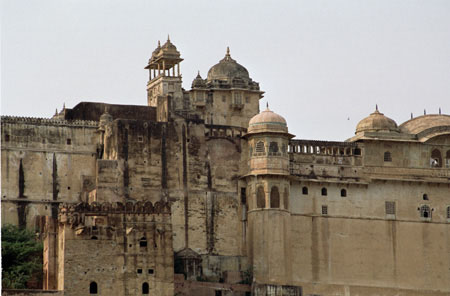
Not a good idea to climb up, nor to be thrown down.
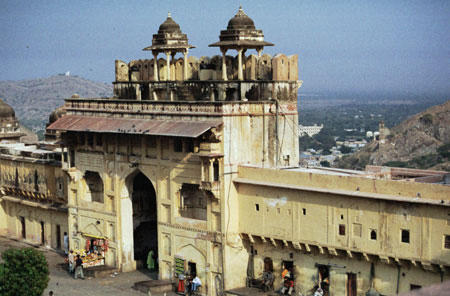
There's an enormous courtyard in the center.
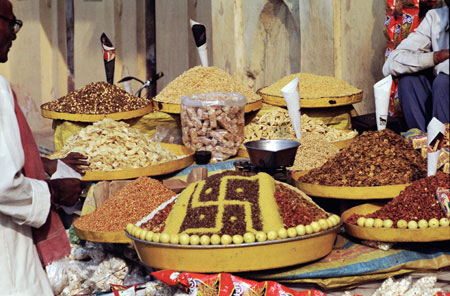
This stand was right inside the front gate, on the left side (see photo above).
The swastika is a good luck sign, and attractive merchandising for Indian customers.
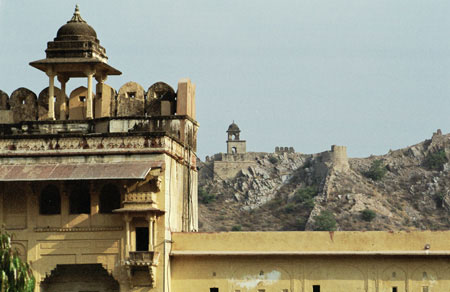
These were the watchtowers and first line of defense. Nice to know that someone is looking out for you.
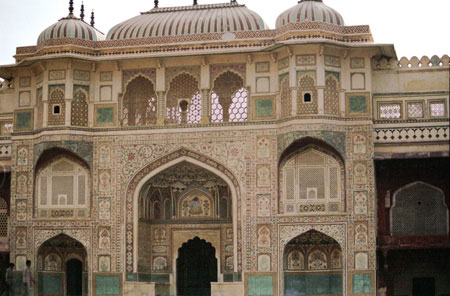
The gateway leading to the palace portion of the fort. Above the door is an image of the god Ganesh.
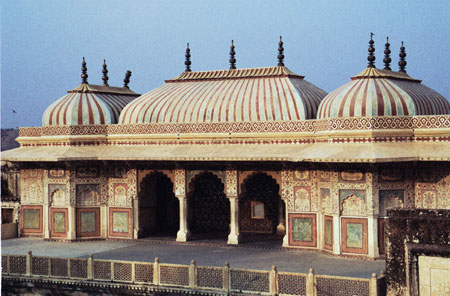
It's an elevated walkway, and a one-story structure. As with the Wind Palace in Jaipur, the royal women could observe without being seen.
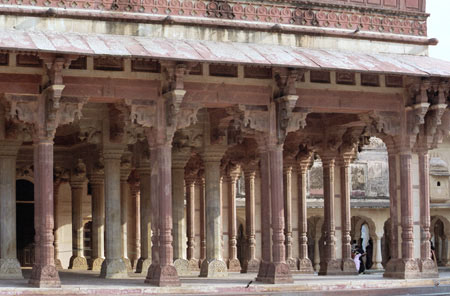
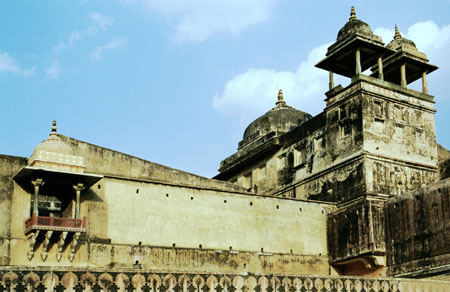
Apparently, the warren-like design made it easier for the maharaja to visit various wives without the others knowing.
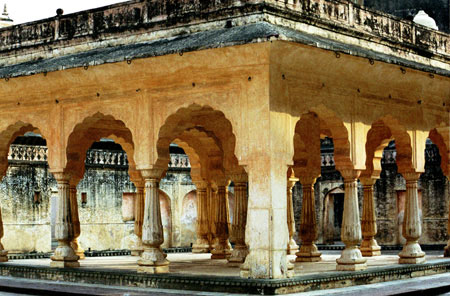
The metal hooks around the building are for curtains.
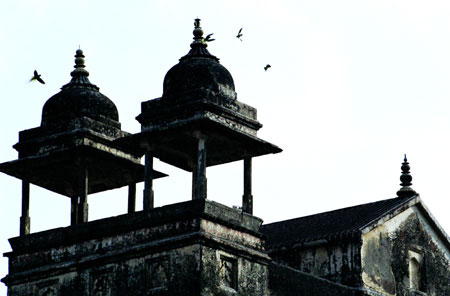
Also near the women's quarters, a part of the fort that hasn't been renovated.
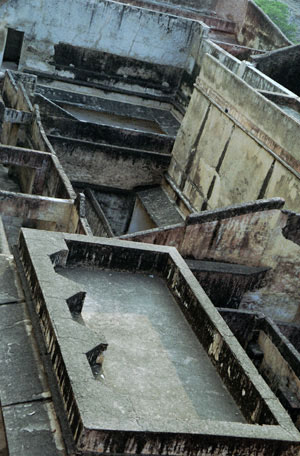
Taken at the edge of the fort that looks out at the defensive walls.
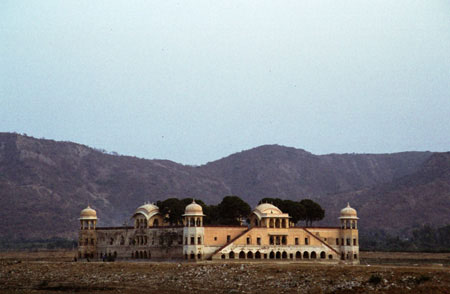
This palace is between Amber and Jaipur. It was built by Sawai Madho Singh I.
The monsoons hadn't come to Rajasthan for four years at the time this photo was taken, and unfortunately, there wasn't a lot of water around the Water Palace.